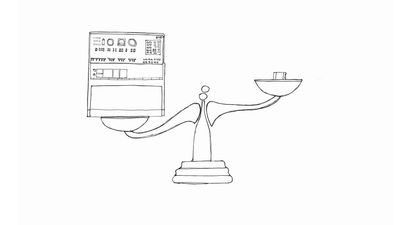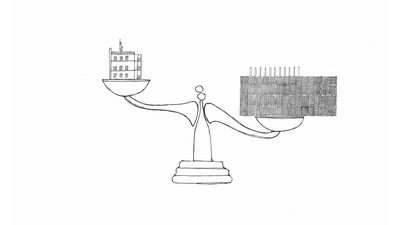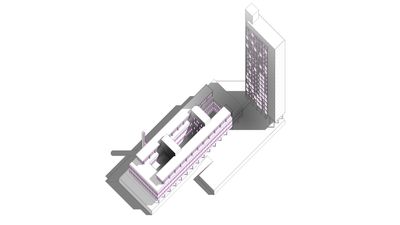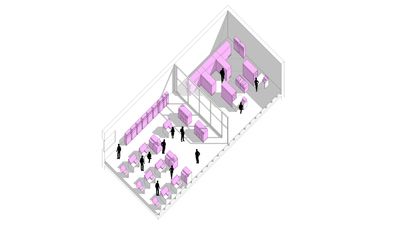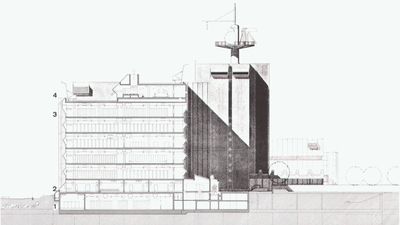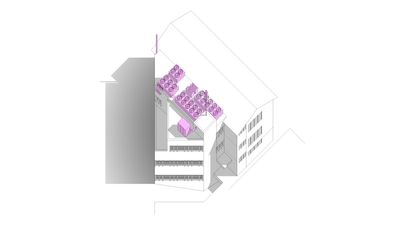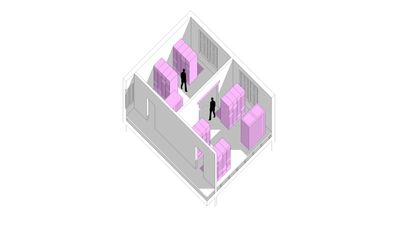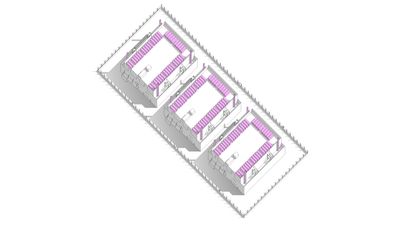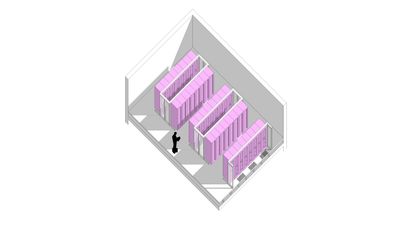AtlasArchitectural Adaptation to Technological Change Frederic Holstein, Noah Martin, Diego Wicki, and Noé Keller
The continuous advancement of digital technologies has created specific architectural challenges in the design of data centres, requiring these buildings to accommodate increasingly complex technical systems. Data centres, as the physical backbone of the digital economy, exemplify how architecture must respond to rapid technological change. Their design is shaped by evolving requirements for data storage, cooling, energy efficiency, and security, all of which directly influence spatial organisation, construction methods, and material choices.
Over the past decades, data centre typologies have evolved significantly. In our work we exemplify different aspects of data centre architecture in relation to technological change. The first data centres were small server rooms integrated within existing office or institutional buildings, serving limited computational needs. In Switzerland, the expansion of telecommunications and computing infrastructure led to the construction of purpose-built facilities by the Swiss Postal, Telephone and Telegraphy Services (PTT), such as the Fernmeldezentrum 3 Herdern. These facilities were specifically designed to house technical systems, incorporating considerations for equipment, power supply, and operational reliability into architectural form. With the emergence of the internet in the late 1990s and the transition from an industrial to an informational economy, many older industrial buildings were repurposed to accommodate growing data demands. This period marks the shift toward the type of data centres familiar today, bridging the gap between PTT-era infrastructure and modern large-scale facilities. Eventually, these adaptive strategies gave way to black-boxes in hyperscale: massive, modular, and highly automated structures designed to handle the exponential growth of global data flows and cloud computing. Throughout this evolution, data centres continue to expand in both number and scale, reflecting the persistent growth of digital activity and the material infrastructure required to support it.
Data Storage: Miniaturisation or Maximisation?
Data storage in data centres has evolved from punched cards and magnetic tapes all the way to hard drives. While technological advancements have made storage devices much smaller, the exponential growth of data drives the construction of ever larger and more numerous data centers. This creates a paradox: Technological miniaturisation at the device level is also a maximisation at the architectural scale.
Architectural Monumentalism
During the 1960s and 1970s, computers were only used by large companies, such as the PTT, the state authority responsible for Post, Telephone and Telegraph services in the country. For data processing they used an IBM computer system in the newly built PTT center in Ostermundigen. The building had a proud representative architecture that was not dictated by the technology inside.
Technology Shapes Architecture
Data centre architecture is driven by technology, requiring cooling systems, server racks, cables, power supply, raised floors, ventilation, and security infrastructure. The façade often reflects these interior functions, as in Herdern, where aluminium construction expresses a new industrial architecture shaped by technological needs. Modularity and precise prefabricated components allow the building to adapt to future technologies.
Retrofitting into a Data Centre
In the 1990s, small-scale computer use and the rise of the internet or the transition from the industrial to the informational age led to an increased need for space for data and data processing. Due to the rapidness of said growth, a lot of the data centres of that time were retrofitted industrial buildings like factories or storage rooms. One example like this would be the building at Letzigraben 75 in Zurich. It is an inconspicuous building in the middle of a residential zone. If you take a closer look, it becomes apparent that it is a retrofitted building, characterised by closed shutters and cooling system sitting on top of it.
Black Box Typology: Dehumanisation or Decentralisation?
Modern data centres have become “black boxes,” largely isolated from society and equipped with strict, carefully controlled security systems. They require fewer human operators, as machines are more reliable and reduce the risk of error. At the same time, we generate data everywhere, feeding the cloud and effectively working for these data centres in a decentralised way. Looking ahead, this cycle is likely to continue, with data centres expanding and evolving alongside our constant digital activity.
Conclusion
Miniaturisation becomes Maximisation: as storage devices grow smaller, the presence of data centres increases. From the 1950s on, data centre typologies have evolved from modest server rooms into nowadays vast hyperscale infrastructures. Increasingly, technological requirements and security protocols dictate their spatial logic and architectural expression. The transition from the industrial to the informational age in the 1990s has accelerated the expansion and transformation of these architectures. Rather than only leading to dehumanisation, this shift also reflects a form of decentralisation, as data is now generated and uploaded into the cloud continuously wherever we go.


